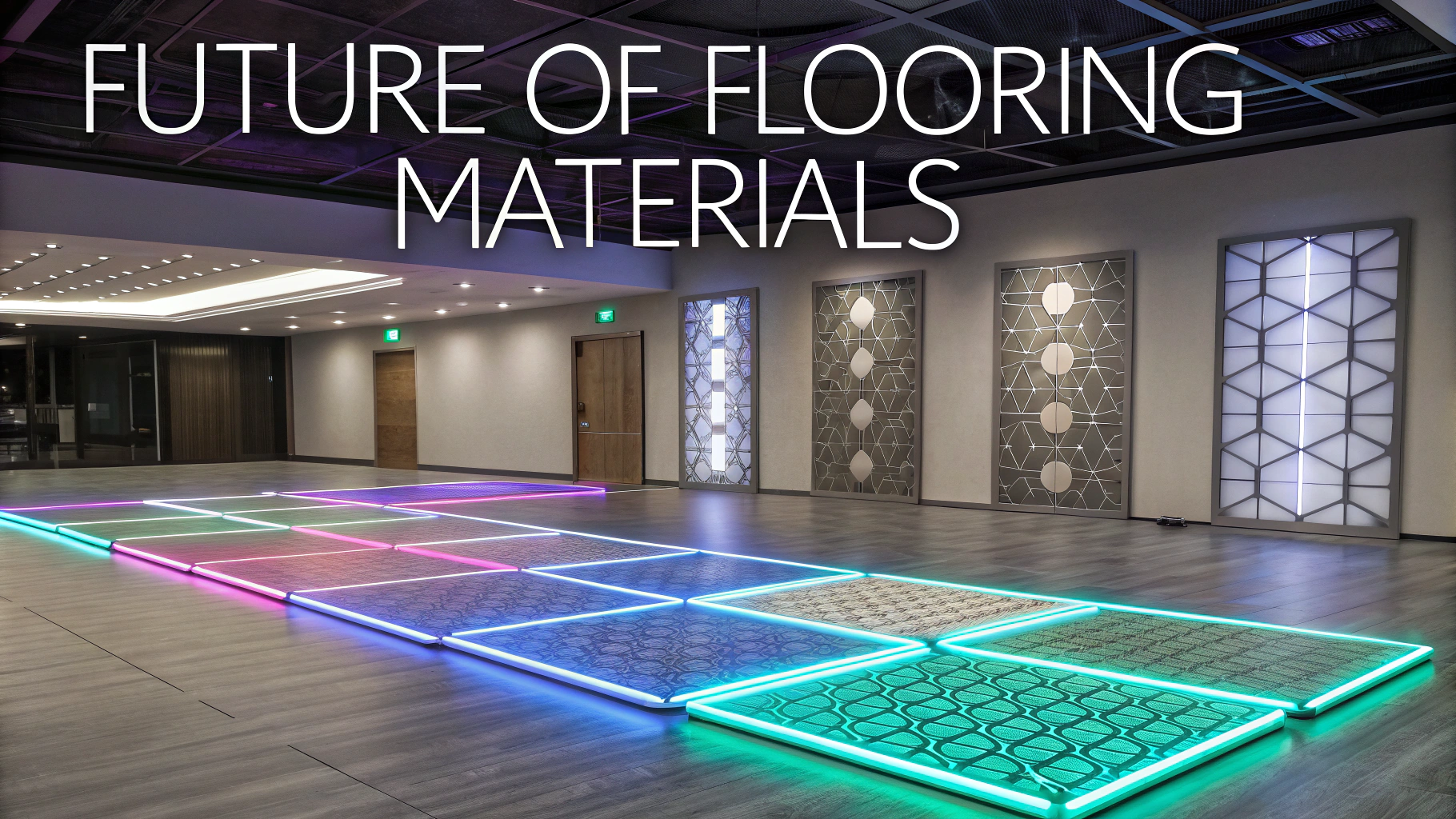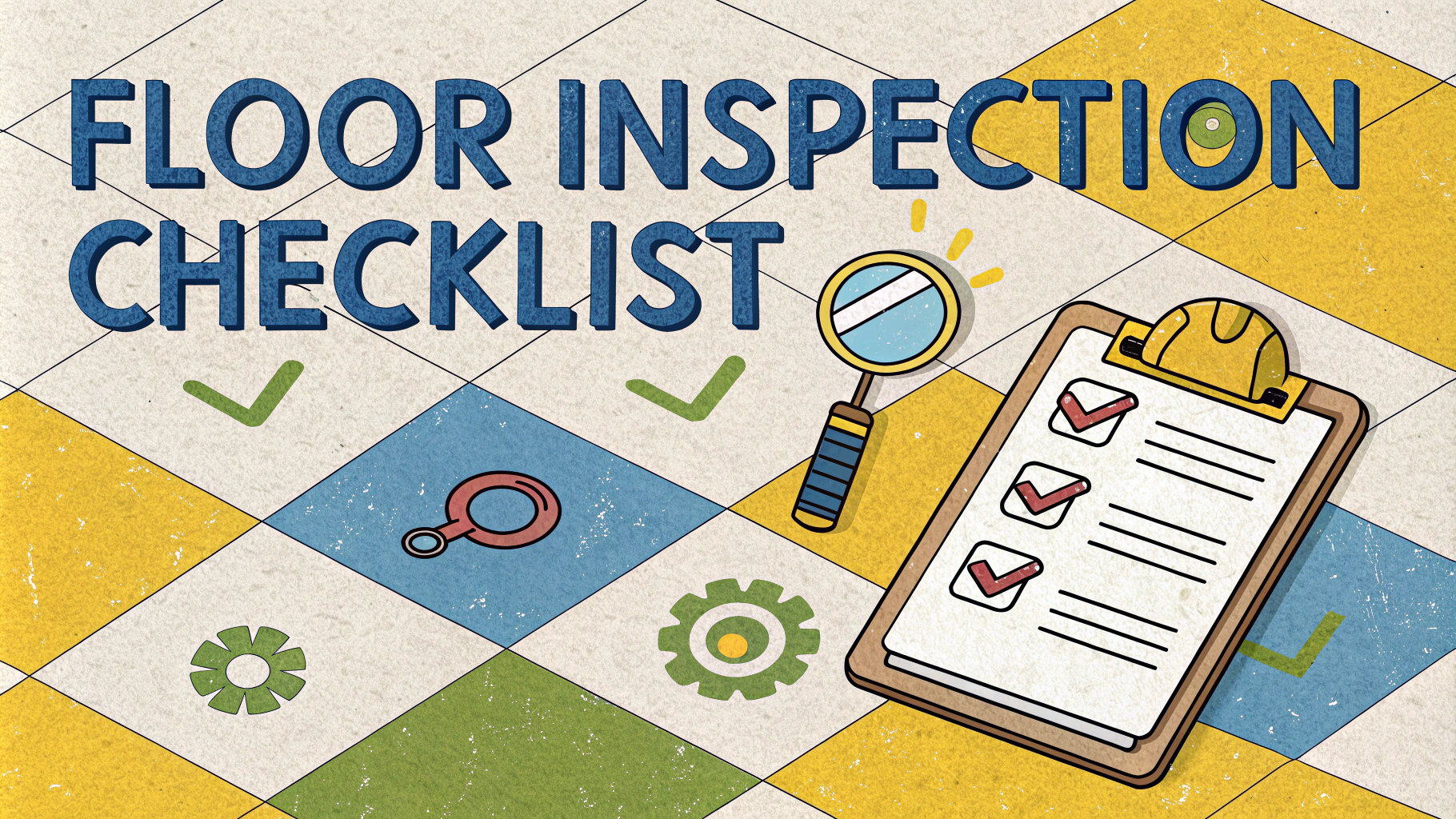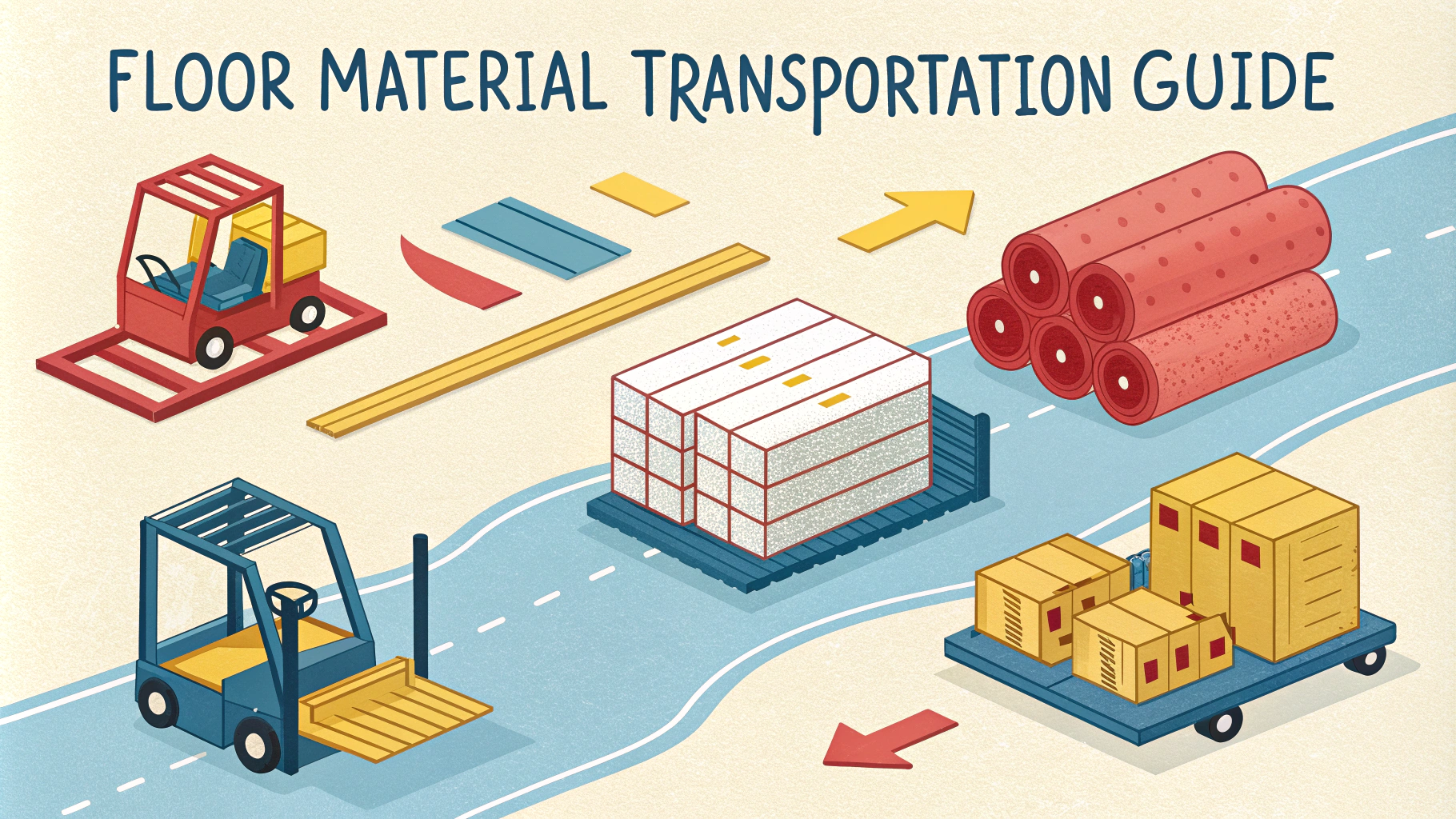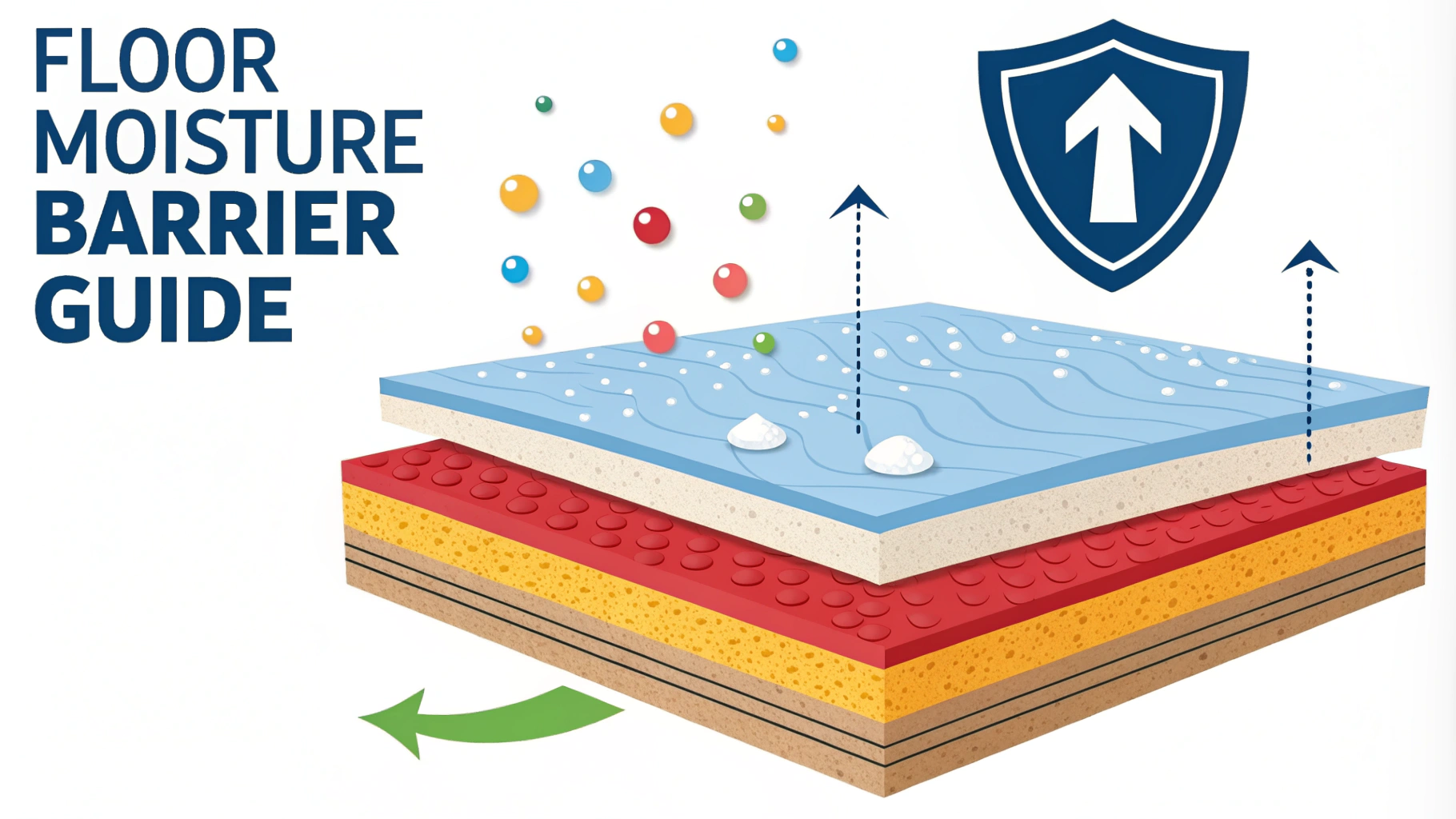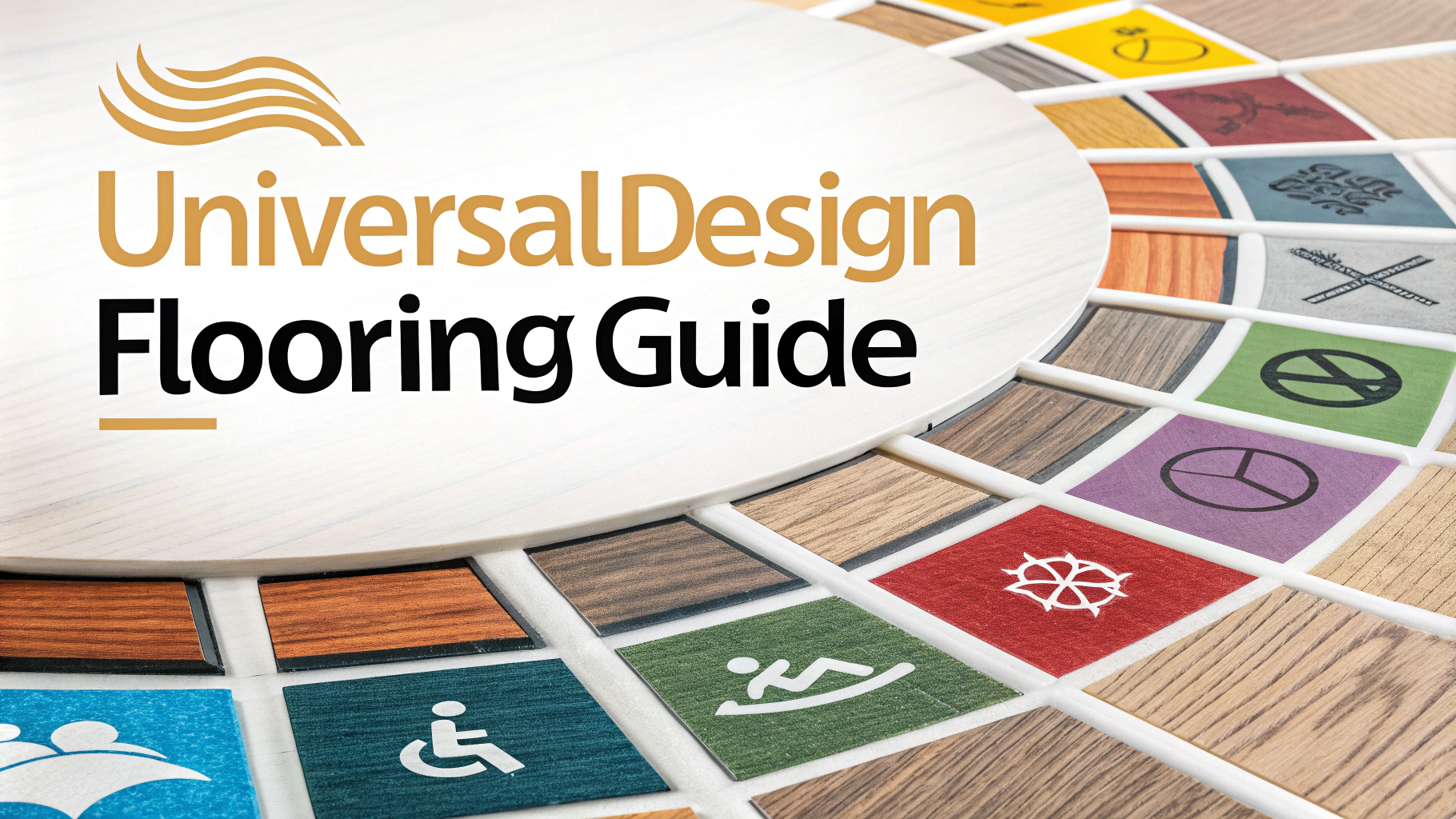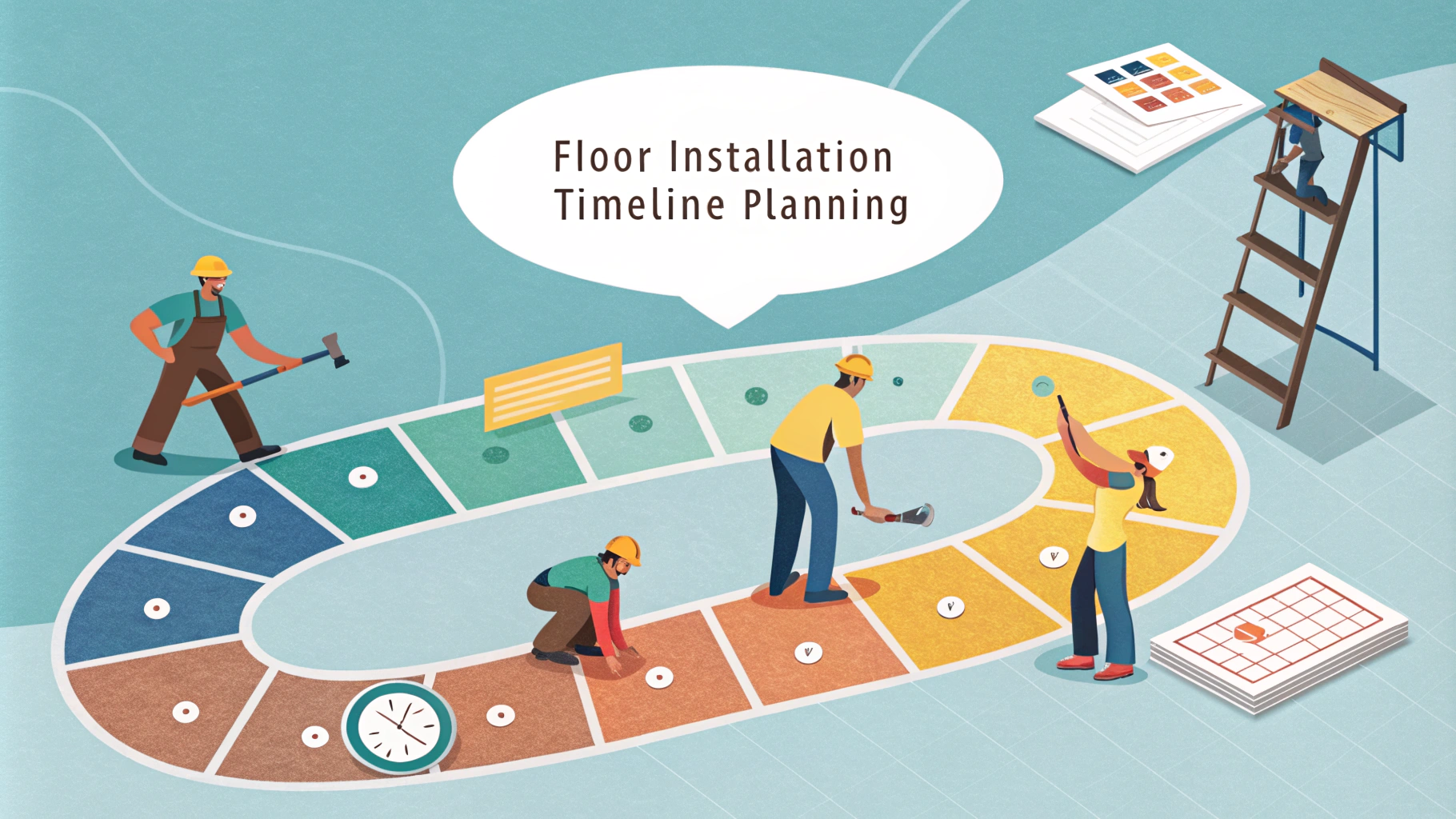Planning a floor installation requires careful attention to timelines and scheduling to minimize disruption and ensure quality results.
Getting the sequence and timing right helps avoid costly mistakes and keeps your project running smoothly from start to finish.
This timeline guide breaks down the key phases of flooring installation to help you plan effectively and coordinate with contractors.
Pre-Installation Timeline (1-2 Weeks)
- Order materials and allow for delivery time (5-7 days)
- Acclimate flooring materials to room temperature (48-72 hours)
- Clear furniture and remove existing flooring (1-2 days)
- Inspect and prepare subfloor (1-2 days)
Installation Day Preparation
- Turn off HVAC systems to minimize dust
- Cover vents and doorways
- Secure workspace access for installers
- Remove doors if needed
- Setup dust collection equipment
Installation Duration by Flooring Type
| Flooring Type | Average Timeline |
|---|---|
| Hardwood | 3-5 days |
| Laminate | 1-2 days |
| Tile | 3-5 days |
| Carpet | 1-2 days |
| Vinyl | 1-2 days |
Post-Installation Schedule
- Allow adhesives to cure (24-48 hours)
- Wait before replacing furniture (24 hours)
- Schedule final inspection
- Clean and maintain new flooring
Special Considerations
Humidity levels should remain between 35-55% during and after installation.
Temperature should stay between 60-80°F (15-26°C) throughout the process.
Book contractors 2-3 weeks in advance during peak seasons (spring/summer).
Project Planning Tips
- Add 20% buffer time to estimated completion dates
- Schedule installations during mild weather when possible
- Plan for temporary living arrangements if needed
- Coordinate with other home improvement projects
Next Steps for Your Project
Contact local flooring contractors for detailed quotes and availability (1-800-FLOORING).
Check manufacturer warranties and installation requirements before finalizing plans.
Document existing floor conditions with photos before work begins.
Installation Costs & Budgeting
Installation costs vary significantly based on flooring type, room size, and location. Plan your budget with these factors in mind.
| Service | Average Cost Range |
|---|---|
| Floor Removal | $1-3 per sq ft |
| Subfloor Repair | $2-4 per sq ft |
| Professional Installation | $3-8 per sq ft |
| Materials Disposal | $100-300 flat fee |
Quality Control Measures
- Inspect materials upon delivery for damage
- Check pattern matching and color consistency
- Verify proper subfloor moisture levels
- Monitor installation technique and spacing
- Document all quality checks performed
Maintenance Schedule Setup
First Month
- Light cleaning only
- Avoid heavy traffic when possible
- Monitor for any settling or issues
Long-term Care
- Regular cleaning schedule
- Seasonal deep cleaning
- Annual professional inspection
Ensuring Long-Term Success
Document all warranty information and keep installation receipts in a safe place. Schedule regular maintenance checks to protect your investment and maintain the beauty of your new floors.
Consider purchasing extra materials for future repairs (recommended 5-10% of total flooring). Store these materials in a climate-controlled environment.
Register your product warranty within 30 days of installation to ensure full coverage protection for years to come.
FAQs
- How long does it typically take to install different types of flooring?
Hardwood: 1-3 days for 1000 sq ft
Laminate: 1-2 days for 1000 sq ft
Tile: 3-5 days for 1000 sq ft
Carpet: 1 day for 1000 sq ft
Vinyl: 1-2 days for 1000 sq ft - Should I remove furniture before floor installation begins?
Yes, all furniture should be removed from the installation area. Some installers may move furniture for an additional fee, but it’s recommended to clear the space beforehand for optimal results. - How long do I need to wait before walking on newly installed floors?
Light foot traffic can resume after:
Hardwood: 24 hours
Tile: 24-48 hours after grouting
Carpet: Immediately
Vinyl: Immediately
Laminate: Immediately - What’s the proper order of floor installation tasks?
Remove old flooring > Clean/repair subfloor > Acclimate materials > Install underlayment > Install new flooring > Install trim/molding > Clean up - How long should flooring materials acclimate before installation?
Hardwood: 3-5 days
Laminate: 48 hours
Vinyl: 48 hours
Engineered wood: 48-72 hours - Can flooring be installed in any weather conditions?
Indoor temperature should be maintained between 60-80°F and humidity between 30-50% for optimal installation. Extreme temperatures or humidity can affect material expansion and adhesive curing. - How much extra flooring material should I order?
Order 10-15% extra for standard rooms and 15-20% for complex layouts or diagonal installations to account for cuts, waste, and future repairs. - What’s the recommended timeline for sealing or finishing after installation?
Hardwood: 24 hours before sealing
Tile: 48-72 hours before sealing grout
Natural stone: Immediately after installation
Concrete: 28 days after pouring - When can I move heavy furniture back after floor installation?
Hardwood: 24-48 hours
Tile: 72 hours
Carpet: Immediately
Vinyl: 24 hours
Laminate: 24 hours - How long should baseboards be removed before and after installation?
Remove baseboards at least 24 hours before installation begins. Reinstall baseboards 24-48 hours after flooring installation is complete to allow for proper settling and expansion.

